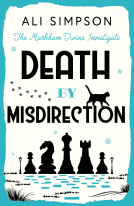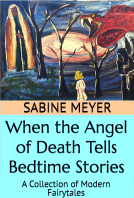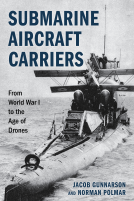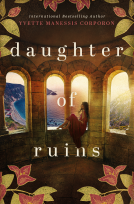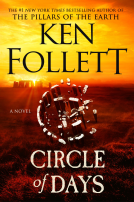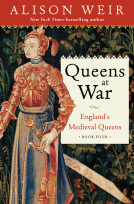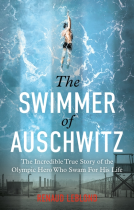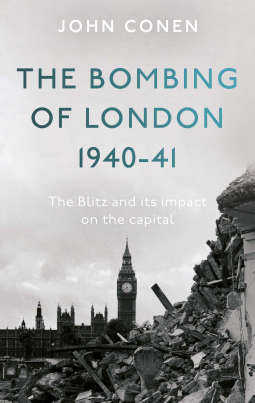
The Bombing of London 1940-41: The Blitz and its impact on the capital
by John Conen
This title was previously available on NetGalley and is now archived.
Send NetGalley books directly to your Kindle or Kindle app
1
To read on a Kindle or Kindle app, please add kindle@netgalley.com as an approved email address to receive files in your Amazon account. Click here for step-by-step instructions.
2
Also find your Kindle email address within your Amazon account, and enter it here.
Pub Date Jan 28 2023 | Archive Date Feb 17 2023
Talking about this book? Use #TheBombingofLondon194041TheBlitzanditsimpactonthecapital #NetGalley. More hashtag tips!
Description
This is the story of the London Blitz of 1940-41 and is a combination of social and military history of this time. The title emphasises bombing over blitz as the word 'Blitz' has now taken on a much more general meaning associated with Britain's wartime spirit. This book describes how the Blitz progressed from the daylight attacks of the summer of 1940 through to the major raids of the spring of 1941, and looks at exactly what happened in the metropolis in those years. During the course of these attacks thousands of bombs fell on London, many triggering an ‘incident, a bland word that on hundreds of occasions effectively resulted in a disaster which in peacetime would have made national headlines.
A chronology of the London Blitz forms the centrepiece of this account, exploring the progress of the aerial attack, what happened in each raid, the human cost and material destruction, the buildings destroyed or damaged and the people killed and injured. These major bombing incidents and bomb-related events have remained little-known since the War. The Civilian War Dead Roll of Honour and the London Gazette – sources of which only limited use has been previously made – are used to investigate these events. The damage to London’s buildings has also seldom been fully explored.
The book covers all the major losses suffered during the war, what happened to the damaged buildings after it and how that destruction has influenced today’s townscape. It will help readers appreciate what happened in the capital in the grim years 1940-41, and celebrate and recognise those Londoners who endured it.
A Note From the Publisher
Marketing Plan
A military and social history of the London Blitz focussing on the enormous human cost and material destruction that occurred.
An analysis of the impact of the Luftwaffe bombing campaign and the response of the capital's defences.
This book shows that the attacks, although noisy and frightening, destructive and lethal, weren’t very effective from a military point. It shows how civilian resilience was tested by the death and destruction but not to breaking point.
Available Editions
| EDITION | Ebook |
| ISBN | 9781803134093 |
| PRICE | £6.99 (GBP) |
| PAGES | 200 |
Average rating from 11 members
Featured Reviews
 Caroline P, Reviewer
Caroline P, Reviewer
Informative and interesting. For anyone interested in the real history of the London Blitz, this is a good book to skim through.
A different history of the Blitz.
Firstly, as Conen mentions throughout the majority of the history of the Blitz that you can read is about the social impact. Conen instead actually tells us the history OF the Blitz. So when you read this text be aware it may not have everything you are used to reading- especially as it has more of a focus on the military history that is very often overlooked.
Second, this text is a great reference with an obvious narrative and clear references to other works and historians, to give the reader a full history of the Blitz. If you are looking for a reference text (like I do as an educator) then this is a winner. Easy chapter spacing and headings. You know exactly what you will read and lots of links to research and other historians also.
Thirdly, the inclusion of a timeline, specific events and witness accounts allow the reader to understand the time, without only focusing on the ‘Blitz Spirit’ and the creation of Bomb Shelters in which all are aware. I found it a surprisingly but a well-wanted and needed edition, and made me wish other historians included these.
I have rated it 4 as I cannot rate it 4.5. As with a history of a well documented event a lot will be old research with a new twist. Which I do not mind at all, but I felt that I dragged myself through some chapters but I felt amazing having read through it to the end.
Overall views: a great reference for the Blitz and shall be a help to many an educator and historian alike who teaches or specialises in this history.
Thank you to NetGalley and Matador publishing for allowing me to read and review an advanced reader copy of this book.
 Jeremy B, Reviewer
Jeremy B, Reviewer
Americans, to the degree we know about The Blitz, see it through the lens of old movies and flashes of newsreels. We therefore have a distorted view of what really happened. As an example, a frequent scene in the newsreels and in accounts contained in books shows Londoners taking to the Tube (subway) to be safe. In fact only 4% used them. A minority of Londoners (40%) used any shelter at all. Over 20,000 Londoners died in the Blitz and the biggest tragedies happened in the public shelters. Because of the random nature of where the bombs fell, a direct hit would kill a far greater number of people in a public shelter than a hit on a private home.
We also have a perception of London being one big happy family pulling together during the Blitz. In reality, British society was very class oriented and there was a fair amount of discussion around the really safe shelters being available only to the upper class. The East End of London was damaged severely and homelessness was a significant problem.
The author clearly set out to clarify and organize the known facts about the Blitz. He goes day by day and meticulously sets out which buildings were damaged and who was injured and killed. By doing so the book becomes repetitive, especially if the reader knows little about London, its history and geography. (A brief stop in Wikipedia and having a map of London readily available would be advisable). By persevering however, a pattern of consistently courageous behavior on the part of ordinairy citizens emerges that, to me, made the effort worthwhile. This book may not be for everyone but will be invaluable to future students of the history of WW2 and of London.
This book gives insight into the sheer scale of damage and the lasting impact of the blitz. I liked learning more about the military aspects of the blitz - the tactics and which buildings were targeted. It makes for a more comprehensive understanding of the events and supplements some of the accounts which focus more on human impact and social history. Those aspects are here, but it is the additional information which sets this account apart.
 Kevin M, Reviewer
Kevin M, Reviewer
The overwhelming impression on reading this informative book is that it was, to some degree, a labour of love. The author immerses himself in the quite amazing amount of detail he has assembled to tell a more nuanced story of the bombing endured by London during the Second World War. Most accounts sketch over the daily toll of damage, deaths and injury to create an impression, certainly of horror, but without capturing the remorseless and draining experience of Londoners. Reading of ‘nightly raids that caused significant damage and injury’ conveys something of the daily experiences of those on the ground, but nothing like the sense revealed in the condensed account of each day or night when bombs fell on the capital. The casualties borne by the UXB teams whose job it was to make safe unexploded bombs, and the police and emergency services who were required to be on duty whilst bombs fell around them is also described in a sympathetic way.
Overall, this is an excellent account that perfectly meets the expectations of its title.
 Mary C, Reviewer
Mary C, Reviewer
Thank you to Net Galley for this e copy of The Bombing of London 1940-41 : The Blitz and it’s Impact on the Capital in exchange for a honest review.This book was a very interesting read- chock full of historical facts of the bombing of Landon and the effect it had on its inhabitants.My mother was a nurse in London during the blitz and the stories she told me parallel the facts told in this book.The most remarkable thing about the English people my mother told me was that they had an iron Will and refused to be broken by these terrible events- a similar theme that is echoed in this book .I really enjoyed reading this book and think it is perfect for anyone interested in this historical period.
 Susan J, Reviewer
Susan J, Reviewer
I have read numerous accounts about the Blitz and its impact on Londoners. When I first lived in London in 1972, there were still many open spaces where buildings had once stood. It made the stories I read more meaningful and more than 50 years later, it still does.
This book approaches the Blitz from a slightly different angle. It looks at the events on a day by day basis and looks at it from a borough or neighbourhood basis. It is far more detailed than most accounts and while it does not go into the individual stories as much as many that I have read, it does quote a number of first person accounts that are moving. It also looks at the evidence and tries to sort through any conflicting numbers and information. There were a number of cases where it made me question some of the information that I had taken as gospel truth.
One of the things that truly shocked me was the number of fatalities that were in shelters. It certainly helped to explain why so many sought safety in caves and tubes. What did not shock was how terrible those bombs were and how brave and resilient Londoner were. Four purrs and two paws up.
 rachel m, Reviewer
rachel m, Reviewer
A fantastic, readable and crucial document for historical enthusiasts eager to learn more about the Blitz in London. But, unlike other explorations, it is laser-focused deep dive not only exposing the atrocities on the city and its residents but most integrally the ramifications of the bombs on the London structures and urban scape of the City to this day. I found it a magnificent research source and possibly the most unique source on the Blitz in my collection.
 Luke T, Reviewer
Luke T, Reviewer
This is an incredibly detailed story of the Blitz, and for someone who lives in London was actually quite harrowing. The places I would travel and think 'A bomb dropped there', both locally and when I'm in the city itself. But equally the book is full of some of the heroic stories, debunks some of the myths and overall brings to life a part of history which is so easily given one big brushstroke.
I have read a great many books about what we commonly call the L9ndon Blitz. None of them compare to this book. The research here was clearly painstaking and exhaustive and the author has approached the whole subject from a very difficult viewpoint.
Many previous books have concentrated on the human angle, often with eyewitness accounts, which inevitably marginalised the bigger picture. John Conen shows London as a battleground, which, of course, it was, and the devastating destruction of each and every raid is recorded in horrific detail area by area, building by building, almost brick by brick.
My mother survived the London Blitz and gave birth during an air raid. It terrifies me just reading about what she must have gone through.
Readers who liked this book also liked:
JUNO
Arts & Photography, Comics, Graphic Novels, Manga, Travel
Sabine Meyer
General Fiction (Adult), Sci Fi & Fantasy, Teens & YA
Jacob Gunnarson; Norman Polmar
History, Nonfiction (Adult), Professional & Technical
Yvette Manessis Corporon
General Fiction (Adult), Historical Fiction, Women's Fiction
